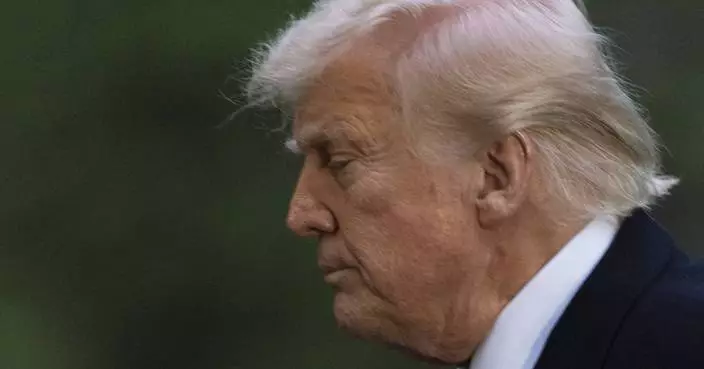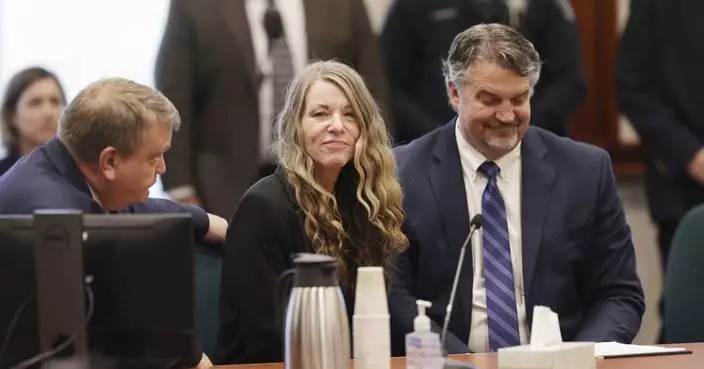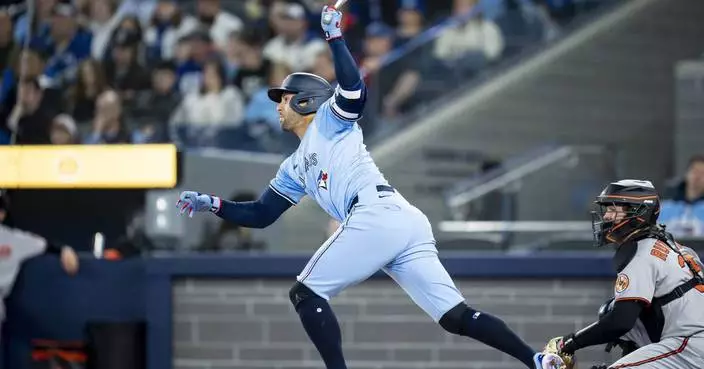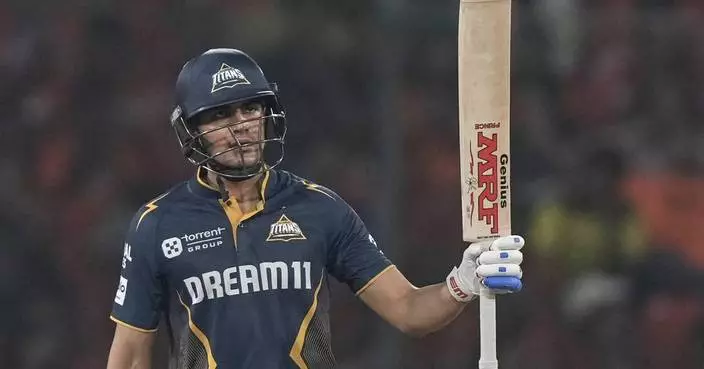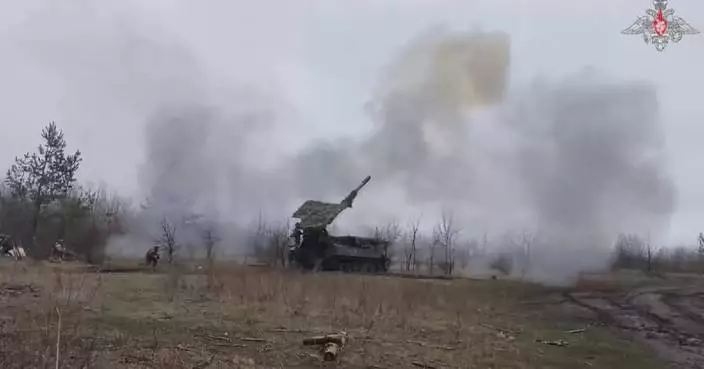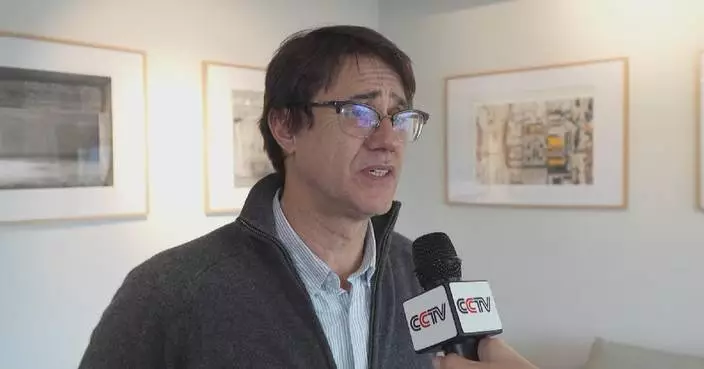BUENOS AIRES, Argentina (AP) — The legal dispute over the capitalization of Diego Maradona’s brand crept into the trial of seven medical professionals accused of negligence in the soccer star's death, emerging in testimony of his younger sister Thursday.
Maradona’s image rights are held by a company called Sattvica in which Maradona’s two sisters and lawyer Matías Morla are shareholders, while none of Maradona’s five children profit from it.
The court in the Buenos Aires suburb of San Isidro called a recess Thursday after a back-and-forth between lawyers when one of them asked Claudia Nora Maradona if she had secured a contractual agreement with her late brother.
“First of all, in life we received gifts. Then he left us the brands,” she replied when asked by Fernando Burlando.
Burlando is the lawyer for Dalma and Gianinna Maradona, two of the star’s daughters who have sued their aunt, other relatives, and close associates claiming fraud in the exploitation of the Maradona brand.
When Burlando tried to delve into the details of the deal, Claudia Nora Maradona’s lawyer, Pablo Jurado, objected to his client’s further comment on the matter, arguing that it could harm her legally. After this, the three judges deliberated for nearly an hour.
Claudia and Rita Maradona, Maradona’s sisters; his lawyer during his lifetime, Morla; and three others stand accused in the civil suit.
The daughters argue that Morla, in collusion with the others, took advantage of Maradona’s deteriorating health to force him to sign over the rights to his brand.
Maradona, who led Argentina to the World Cup title in 1986, died on Nov. 25, 2020. He was 60.
When the hearing resumed, the judges ordered the witness to continue answering — arguing that it was relevant to the case.
Claudia Nora Maradona asserted that Maradona assigned the rights to them during a meeting in the summer of 2019.
“He left me the rights. He told me so,” she testified, adding that she receives monthly dividends.
Ana and Rita Maradona, also sisters of Maradona — and his ex-wife Verónica Ojeda were expected to testify later.
According to the prosecution, the seven professionals charged in the negligence case — a neurosurgeon, a psychiatrist, a psychologist, doctors, and nurses — who were caring for the former soccer great failed to provide adequate care, which may have led to his death.
AP soccer: https://apnews.com/hub/soccer

Signs that read in Spanish "Justice for God," cover a wall where police stand guard outside the court where the medical team that treated the late soccer star Diego Maradona is on trial facing charges of homicide by negligence, in San Isidro, on the outskirts of Buenos Aires, Argentina, Thursday, April 3, 2025. (AP Photo/Rodrigo Abd)

Rita Maradona, the sister of late soccer star Diego Maradona, arrives at court to testify in a trial of the medical team that treated her brother who are facing charges of homicide by negligence, in San Isidro, on the outskirts of Buenos Aires, Argentina, Thursday, April 3, 2025. (AP Photo/Rodrigo Abd)

Ana Maradona, a sister of late soccer star Diego Maradona, arrives at court to testify in a trial of the medical team that treated her brother who are facing charges of homicide by negligence, in San Isidro, on the outskirts of Buenos Aires, Argentina, Thursday, April 3, 2025. (AP Photo/Rodrigo Abd)
Hours before college basketball crowns its next champion, the future of college sports will be hanging in the balance in a California courtroom.
U.S. District Judge Claudia Wilken's scheduled hearing Monday in a courtroom in Oakland is expected to be the last one before the changes will truly begin under an industry-changing, $2.8 billion settlement of a 5-year-old lawsuit against the NCAA and the nation's largest conferences. Among other things, it will clear the way for schools to share up to $20.5 million each with their athletes.
Wilken already has granted preliminary approval for the settlement. It was unknown whether she will give final approval at Monday's hearing, which is expected to include testimony from some of those objecting to details of the sprawling plan. LSU gymnast and influencer Olivia Dunne is among the 18 people scheduled to testify, though she is expected to appear via Zoom.
The new structure outlined by the settlement, which represents a shift in billions of dollars from the schools into the pockets of athletes, is supposed to go into effect on July 1.
Universities across the country have been busy making plans, under the assumption Wilken will put the terms into effect.
“We're going to have a plan going into July 1, then we're probably going to spend the next year figuring out how good that plan is and how we need to modify it going forward,” said Florida athletic director Scott Stricklin, whose department is among the biggest in the country and includes a Gators men's basketball team playing for the national title Monday night against Houston.
The so-called House settlement, named after Arizona State swimmer Grant House, actually decides three similar lawsuits that were bundled into one. The defendants are the NCAA and the Southeastern, Big Ten, Atlantic Coast, Big 12 and Pac-12 conferences, all of whom have been touting the settlement as the best path forward for their industry.
“It's a huge step forward for college sports, especially at the highest level," said NCAA President Charlie Baker, whose organization continues to seek antitrust protections from Congress. “My biggest problem with the way the whole thing works right now is the schools have been removed from the primary relationship with the student-athletes.”
The most ground-shifting part of the settlement calls on schools from the biggest conferences to pay some 22% of their revenue from media rights, ticket sales and sponsorships — which equals about $20.5 million in the first year — directly to athletes for use of their name, images and likeness (NIL).
Still allowed would be NIL payments to athletes from outside sources, which is what triggered the seismic shift that college sports has endured over the last four years. For instance, Cooper Flagg of Duke reportedly makes $4.8 million in NIL deals from groups affiliated with the school and others.
The settlement calls for a “clearinghouse” to make sure any NIL deal worth more than $600 is pegged at “fair market value." It's an attempt to prevent straight “pay for play” deals, though many critics believe the entire new structure is simply NIL masquerading as that.
Another key element is the $2.8 billion in back damages to athletes who played sports between 2016 and 2024 and were not entitled to the full benefits of NIL at the time they attended schools. Those payments are being calculated by a formula that will favor football and basketball players and will be doled out by the NCAA and the conferences.
The settlement also calls for replacing scholarship limits with roster limits. The effect would be to allow every athlete to be eligible for a scholarship while cutting the number of spots available.
There will be winners and losers under such a formula, though some fear it could signal the end of the walk-on athlete in college sports and also imperil smaller sports programs that train and populate the U.S. Olympic team.
AP college sports: https://apnews.com/hub/college-sports

Florida's Alijah Martin (15) dunks the ball against Auburn during the second half in the national semifinals at the Final Four of the NCAA college basketball tournament, Saturday, April 5, 2025, in San Antonio. (AP Photo/Eric Gay)

UConn center Jana El Alfy (8) and UConn guard Paige Bueckers (5) react during the first half of a national semifinal Final Four game against UCLA during the women's NCAA college basketball tournament, Friday, April 4, 2025, in Tampa, Fla. (AP Photo/Chris O'Meara)

Auburn guard Tahaad Pettiford (0) moves on the court against Michigan State during the second half in the Elite Eight of the NCAA college basketball tournament, Sunday, March 30, 2025, in Atlanta. (AP Photo/Brynn Anderson)










